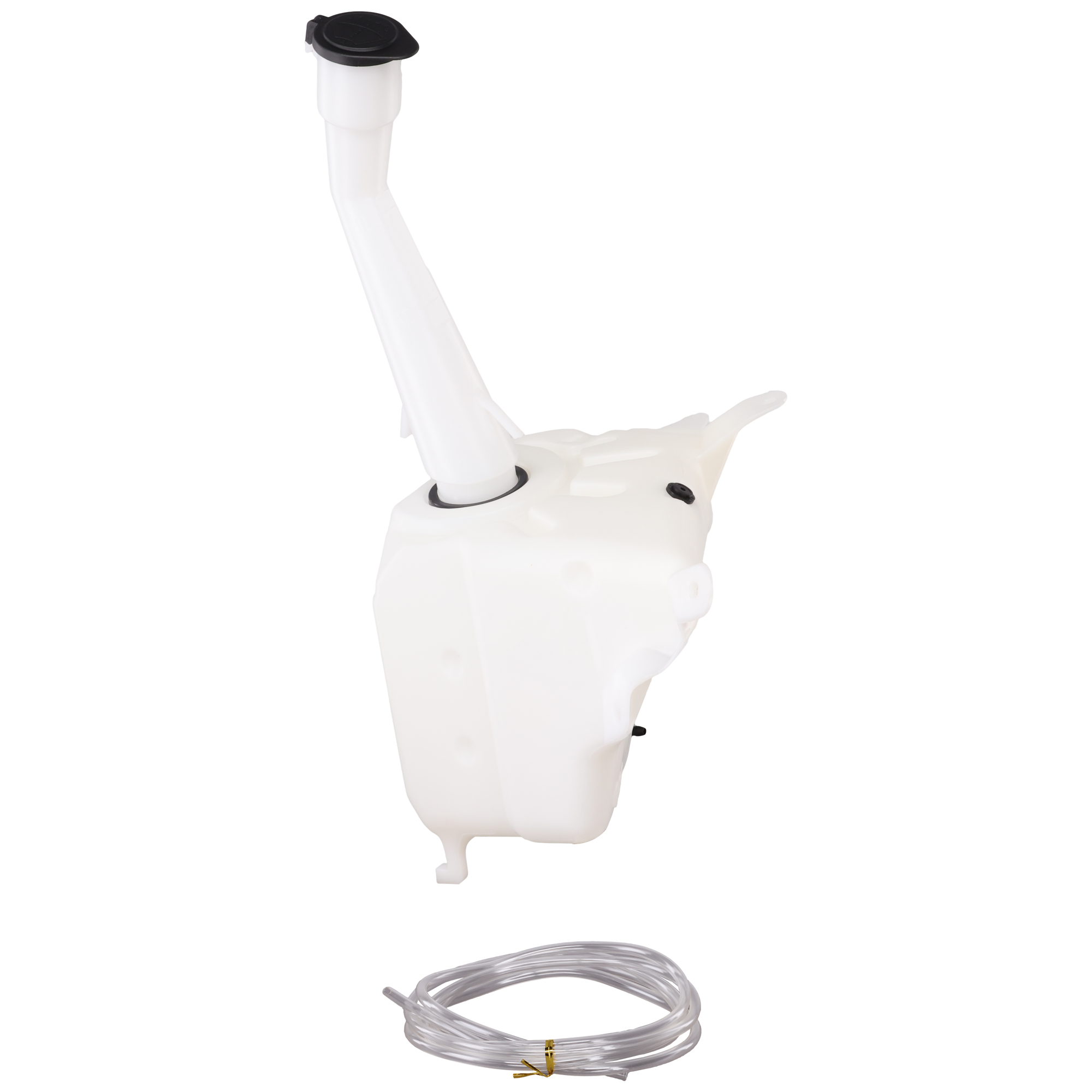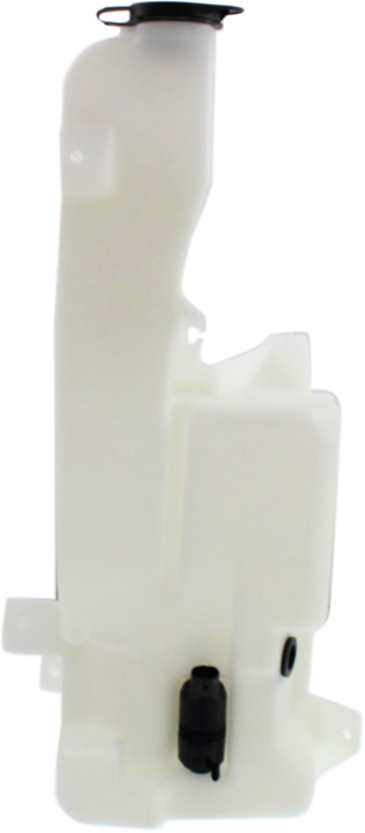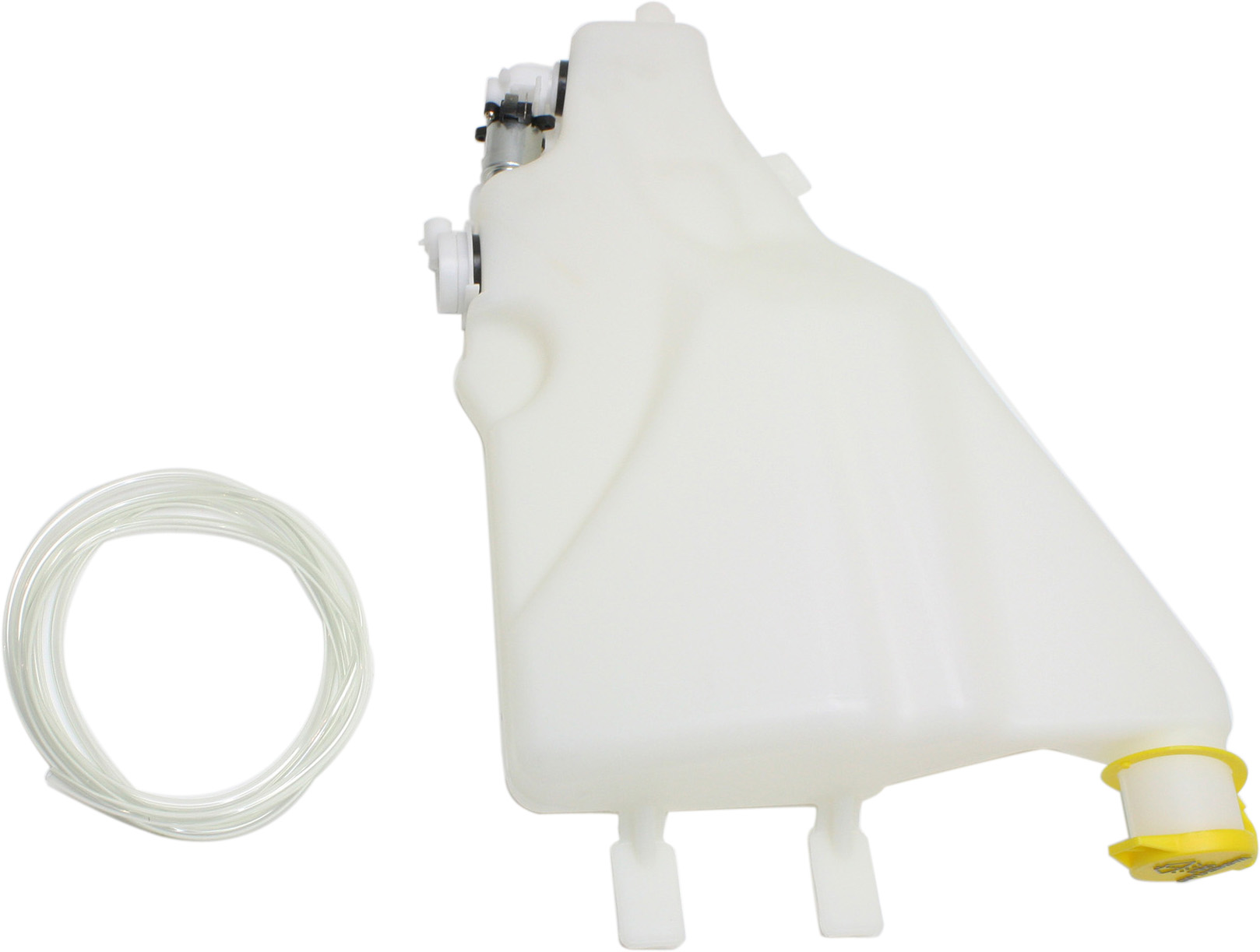The windshield washer reservoir obviously stores windshield washer fluid. You might say “Duh!” Well, while it’s a relatively simple container made from polyethylene plastic, sometimes the reservoir can develop cracks and leaks—which means that if you want to have an operational windshield washer, you’ll need to either replace it yourself or have it replaced.
While it’s a different procedure on every vehicle, replacing the windshield washer reservoir lends itself to DIY-ers and newbies, but only those with a lot of patience that see it as a labor of love, so to speak. If you’re easily frustrated, you’ll need to learn patience to replace some windshield washers.
Windshield Washer Reservoir Replacement
Just to give you an idea of what it’s like to replace the windshield washer reservoir, let’s look at one Asian vehicle and one U.S. Domestic make. But realize that your vehicle may be easier OR harder than either of the two outlined below, so know what you’re getting into before you start:
This is the shop manual procedure on a 2018 Nissan Altima:
- Drain the washer fluid (you decide how)
- Remove the front under cover.
- Remove the right front tire and fender protector (RH).
- Disconnect the harness connectors from the washer motor and washer fluid level switch.
- Disconnect the front washer tube from the washer motor.
- Remove the washer tank bolts, then remove the washer tank.
- Replace the fender protector and the right front tire.
- Replace the front under cover.
As you can see, there are six steps listed for the 2018 Altima, but steps 2 and 3 have sub-steps that need to be considered – you have to remove the “under cover,” the right front tire, and the “fender protector” to gain access. Removing those covers sounds easier than it is on most vehicles, and make sure you know how the fasteners work if they’re plastic. When it’s over, you have to reinstall those parts you removed to gain access.
Okay, let’s have a look at a 2016 Chevy Silverado HD:
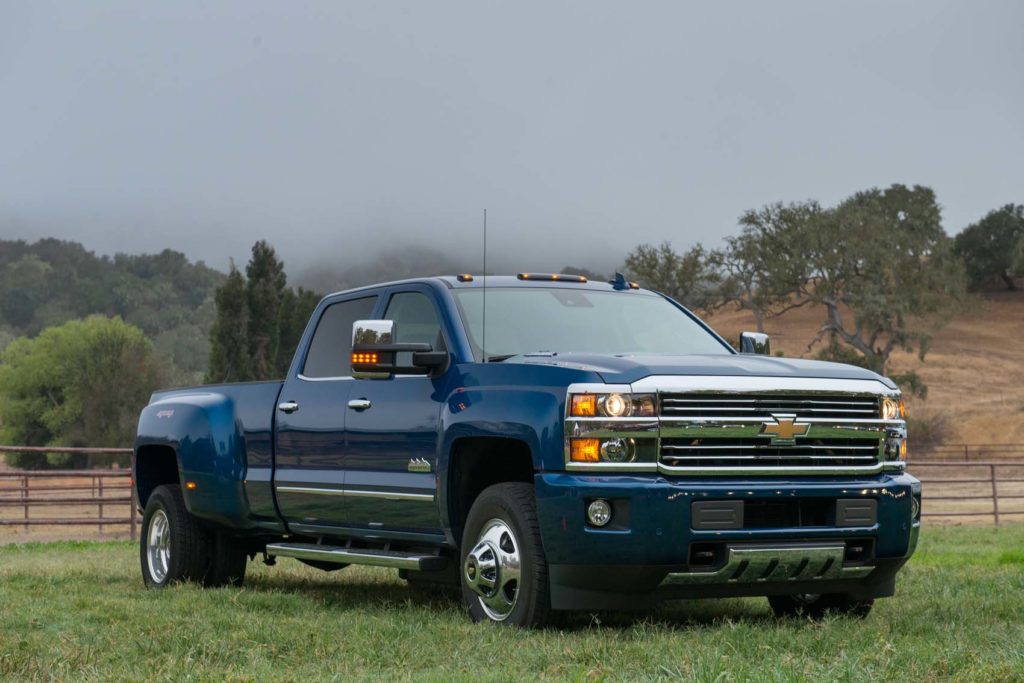
- Remove the left front tire (You’ll need to jack the vehicle up and put it on a stand for this)
- Remove the front wheelhouse liner-left side.
- Remove the front wheelhouse panel front bracket.
- Disconnect the windshield washer pump hose connection to the windshield washer pump.
- Remove the auxiliary battery tray.
- Place a clean suitable drain pan to catch the windshield washer solvent when the windshield washer hose is disconnected. Of course, if you’d rather, you can just let it run out on the ground.
- Disconnect the electrical connector from the windshield washer solvent level sensor.
- Disconnect the electrical connector from the windshield washer pump wiring harness.
- Remove the windshield washer solvent container from the vehicle.
- Empty the windshield washer solvent into a suitable clean container.
- Transfer parts as needed.
- Reinstall the front wheelhouse liner-left side.
- Reinstall the front wheelhouse panel front bracket.
- Reinstall the left front tire. Don’t forget to torque the bolts to spec (144 lbs ft).

Take safety measures before performing this DIY car repair job. Park your vehicle in an area with good ventilation and an even, flat surface. Switch off the ignition, shift the transmission into Park, and set the emergency brake.
Also, don’t forget to put on safety goggles to protect your eyes during this DIY car repair job.
When to Replace the Windshield Washer Reservoir
Like any car part, the windshield washer reservoir can fail ahead of its designated service life. And when it does, you’ll have to replace it to ensure proper functionality.

Here are some of the common reasons that may cause the reservoir to go bad and require replacement:
- Cracks in the reservoir – caused by frozen washer fluid, engine vibrations, and shocks from driving over rough surfaces
- Problem with the seals – the seals around the connection point between the reservoir and the hoses to the windshield washer pumps have failed
Where Is the Windshield Wiper Fluid Reservoir Located?
The wiper fluid reservoir is typically immediately visible as soon as you open the hood. The reservoir is usually located at the rear of the engine bay near the windshield. Sometimes, though, the reservoir is located on the sides, near the front fenders. The reservoir is typically white and translucent, With a cap that has the windshield wiper fluid symbol. If you can’t find the reservoir, then your user’s manual might help.
Symptoms of a Bad or Failing Windshield Washer Fluid Reservoir
It’s easy to notice when the windshield washer reservoir has reached the point where it requires replacement.
The warning signs of a bad or failing reservoir include:
- Uneven spray of washer fluid (this may mean the reservoir is contaminated with jelly-like substance from mixing different kinds of washer fluids – it happens)
- Washer fluid won’t come out at all (this is more likely to be the pump, electrical issue like switch or wiring, clogged nozzles or maybe a split hose.)
- Leaks coming from the reservoir
How to Melt Ice in Windshield Washer Reservoir
Aside from replacing the windshield washer reservoir, it helps to learn how to perform simple maintenance like melting ice in the reservoir or draining it dry. It’s very smart to use non-freezing washer fluid during cold weather. This kind of fluid can also remove light frost from the glass. But what if you “dropped the ball” and now your reservoir is frozen?
Well, you could just drive the vehicle and let the engine heat thaw it out. Or you could try the following methods:
- If you have hours to spare and a heated garage, park your vehicle inside and let it warm. In case you must melt the ice ASAP, direct a hairdryer at the reservoir and hoses or stuff heating pads around the lower half of the reservoir.

Take note, however, that removing the reservoir may not be a good idea, since the plastic will be very brittle when the fluid inside is frozen and you may crack the reservoir. It’s best not to remove the reservoir to deal with frozen fluid. If, of course, the fluid has frozen to the point that it has expanded (9% by volume, as water does), it may already have cracked the reservoir, particularly if the reservoir is old and brittle to begin with.
How to Drain Washer Fluid Reservoir
The reservoir also requires draining every so often. While washer fluid doesn’t deteriorate over time like your engine oil, you’ll need to get rid of old washer fluid before it becomes dirty or replace it with a freeze-resistant product before winter comes. Windshield washer fluid should be changed before outdoor temperatures hit freezing. If your windshield washer fluid freezes, you should check if your washer fluid hoses, nozzles, or pump have ruptured.
An effortless way to drain the reservoir involves triggering the windshield washers until the reservoir runs out. If you want to conserve washer fluid, see if you can disconnect the hoses from the washers so that you can spray the fluid into a container.
In case you cannot separate the hoses from the washers, use a hand pump or turkey baster to siphon the contents of the reservoir into a separate container.
Researching about other parts for your vehicle? Here’s a list of common car body parts.
Where to Get a New Windshield Washer Reservoir for Your Vehicle
There’s nothing more frustrating than having to clean your windshield only to find out that you’re out of washer fluid because the reservoir’s cracked. By now, you probably understand that no car part will last forever. Finding durable replacement parts can be a challenge.
When shopping for a top-notch windshield washer reservoir, you can expect CarParts.com to have exactly what you need. Sourced from the top aftermarket brands today, our selection of windshield washer reservoirs passed the highest quality control standards from industry professionals.
Our windshield washer reservoirs come with a guaranteed fit, taking the guesswork out of finding a compatible product for your daily driver. All our parts are also competitively priced, so you don’t have to worry about going over budget for your repairs.
Shop now, and check out securely with only a few clicks. Enter your vehicle’s year, make, and model into our vehicle selector to find a windshield washer reservoir that fits your car’s specifications. Our fast shipping services can help you get the part you need in as fast as two business days.
Don’t miss out on the best deals on the market, and shop for a windshield washer reservoir today!
Products Mentioned in this Guide
Shop this Project



Any information provided on this Website is for informational purposes only and is not intended to replace consultation with a professional mechanic. The accuracy and timeliness of the information may change from the time of publication.



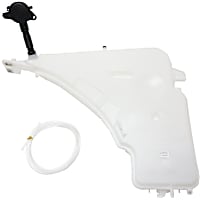 Washer Reservoir
Washer Reservoir
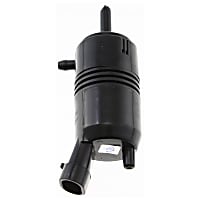 Washer Pump
Washer Pump
